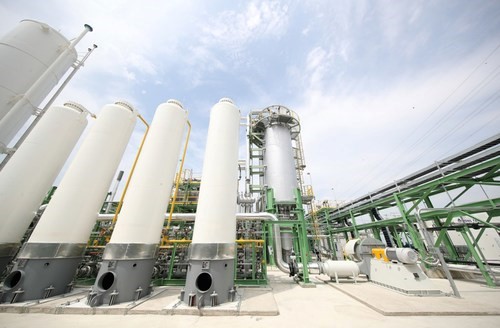News
Gyeonggi Province completes Korea's largest hydrogen production complex
A H2 production complex capable of supplying fuel for 410,000 H2 vehicles per year opened in Pyeongtaek City, Gyeonggi Province.

It is the first of its kind in the Korean capital region and the second in the nation after the facility in Changwon City - the capital of South Gyeongsang Province - which has been operating since the end of last year.
Gyeonggi Province expects that the Pyeongtaek complex will become a bridgehead in the H2 energy era.
"One of the future challenges we must overcome is climate change," said Gyeonggi Province Governor Dong Yeon Kim. "We will do our utmost to promote the H2 economy as one of the measures for dealing with the climate crisis, centering on the Pyeongtaek H2 production complex. The Pyeongtaek complex will be the largest H2 production base in South Korea, producing more than seven tons of H2 a day." He added, "I have no doubt that this complex will play a key role in the carbon neutral era."
Previously, Governor Kim pledged to create a H2 fusion cluster in the cities of Pyeongtaek and Ansan and make it a key hub for the H2 industry through linkage with specialized industries in the region.
Following the construction of the H2 production complex, Gyeonggi Province and Pyeongtaek City plan to build a H2 transportation complex connected to H2 refueling stations near Pyeongtaek Port and to create a H2 city that uses H2 as its main energy source.
The Pyeongtaek complex was selected in December 2019 for the H2 Production Complex Construction Project promoted by the Ministry of Trade, Industry and Energy, entailing a total project cost of $17.5 MM from the central government.
This complex will produce H2 by reforming natural gas (a process of pyrolyzing natural gas via steam) supplied from the Pyeongtaek LNG receiving base. From August, up to seven tons of H2 are slated for production per day (approximately 2,450 tpy). This is the largest production amount in South Korea, capable of fully refueling 1,200 H2 cars a day (approximately 410,000 vehicles per year).
Most of the 33 H2 refueling stations currently operating in the Korean capital region (20 in Gyeonggi Province, seven in Seoul, and six in Incheon) are supplied with H2 from remote locations such as Daesan, Ulsan, and Yeosu, which are more than 120 kilometers away on average. As the completion of this complex stands to substantially reduce H2 transportation costs, the provincial government expects the H2 supply price in the capital region area to drop as well.
Meanwhile, from 2019, the Korean central government (Ministry of Trade, Industry and Energy) has been planning to build small H2 production bases that supply H2 fuel using city gas near demand sites so as to resolve the regional bias in the supply of H2 produced in petrochemical complexes such as Daesan, Ulsan and Yeosu. This initiative is being implemented in seven regions across the country.
The Ministry plans to complete the currently planned establishment of seven small-scale H2 production bases (natural gas-based) within this year so as to realize carbon neutrality, and to additionally support the construction of clean H2 production bases with water electrolysis and carbon capture functions by 2026.

